PolarisbreenPolarisbreen is a c. 25 km long valley glacier, draining the northern part of an ice cap known
as Ursafonna in Ny Friesland, NE Spitsbergen. It flows approximately northeastwards into the sea at
Hinlopenstretet, the strait between the mainland and Nordaustlandet. These photographs were taken by MH in
July-August 2010 on the west flank of the glacier, below the small ice cap of Dracoisen, and on an un-named
peak that we have named informally as “Tophatten” (560 m). |
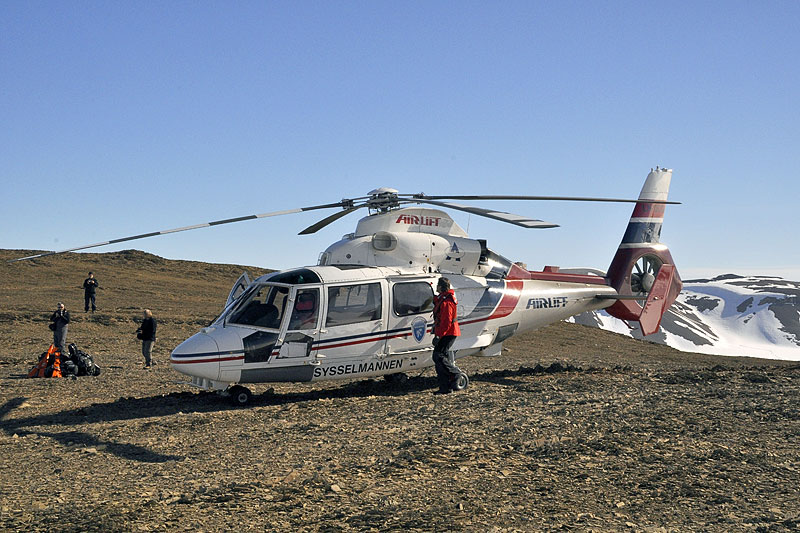 Arrival at our field camp at Dracosisen in the “Super Puma” helicopter belonging to Sysselmannen, the Governor of Svalbard (MH). | 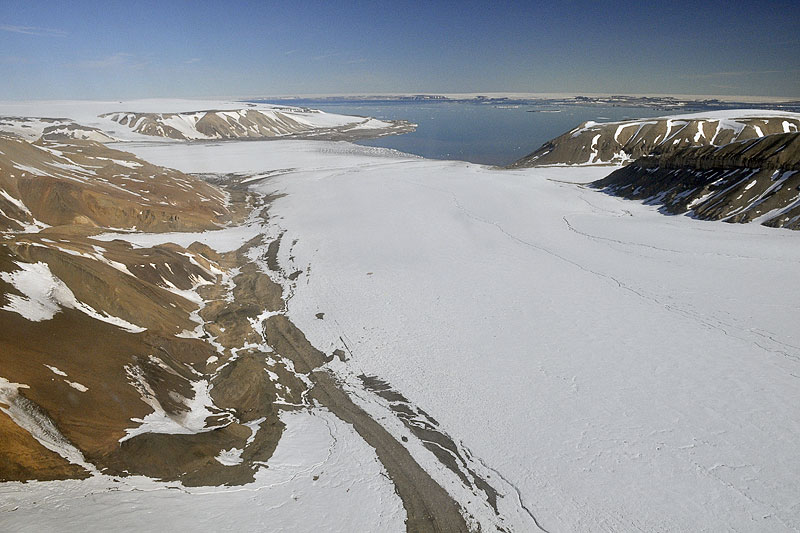 Aerial view of the middle reaches of Polarisbreen, looking towards Hinlopenstretet and Nordaustlandet in the background (MH). | 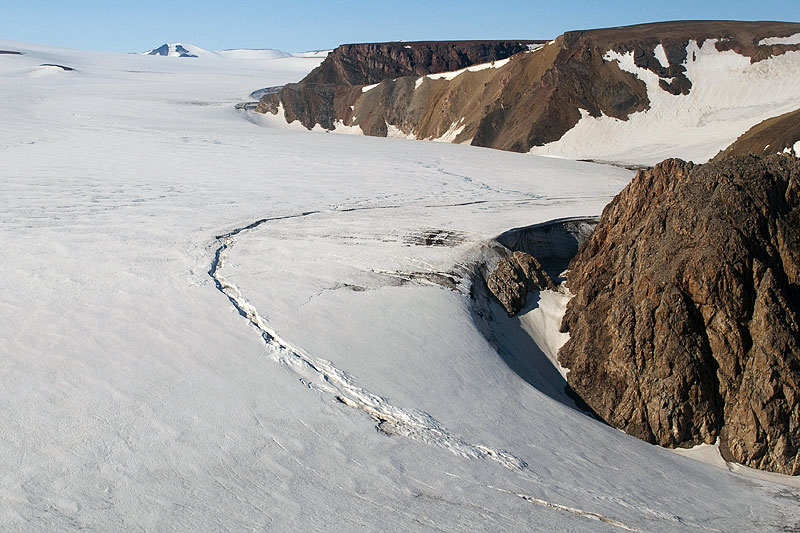 Wind-scoop at the edge of Dracofjella, where ice drains off the local Dracoisen ice cap to feed the main trunk of Polarisbreen. A prominent meltstream is also visible in this photo (MH). | 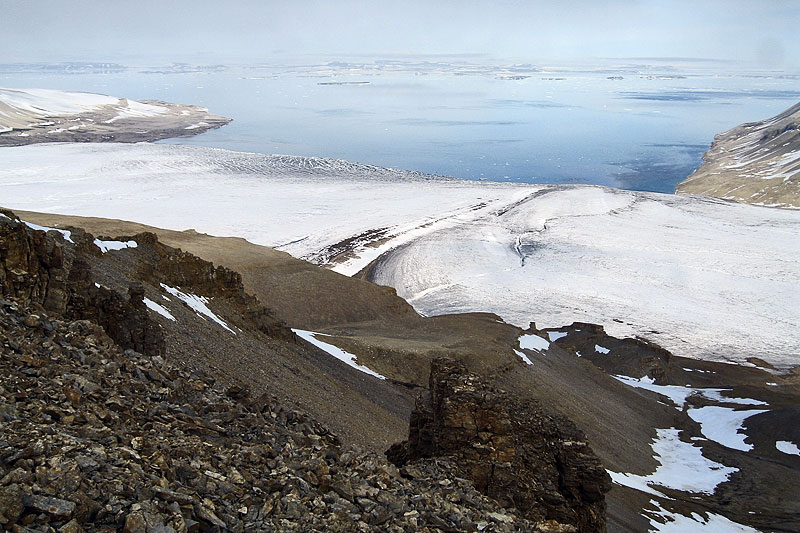 View from the informally named summit of “Tophatten”, looking down on the confluence of Polarisbreen (right) and Chydeniusbreen (left) and their tidewater cliffs. Nordaustlandet is in the backgrounded, shrounded in mist (MH). |
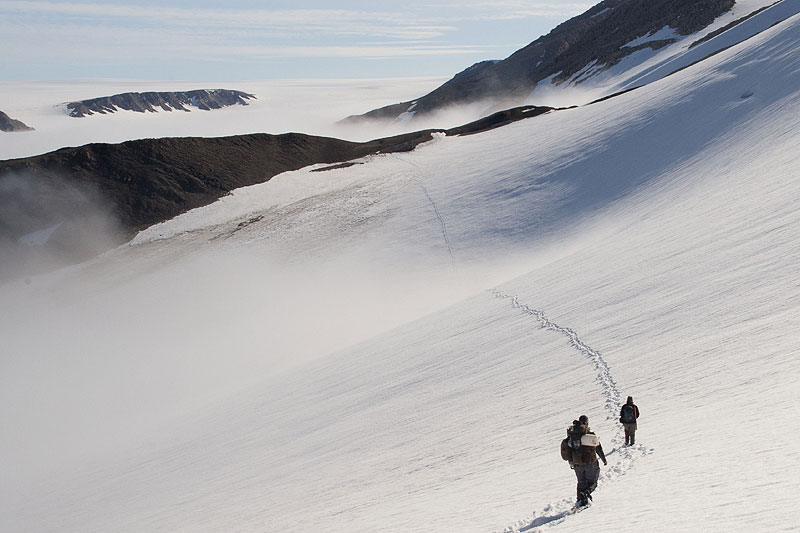 Un-named tributary glacier of Polarisbreen on the east side of Dracoisen. The ice is relatively undynamic, and crevasses are few, allowing easy access between nunataks on snowshoes (MH). | 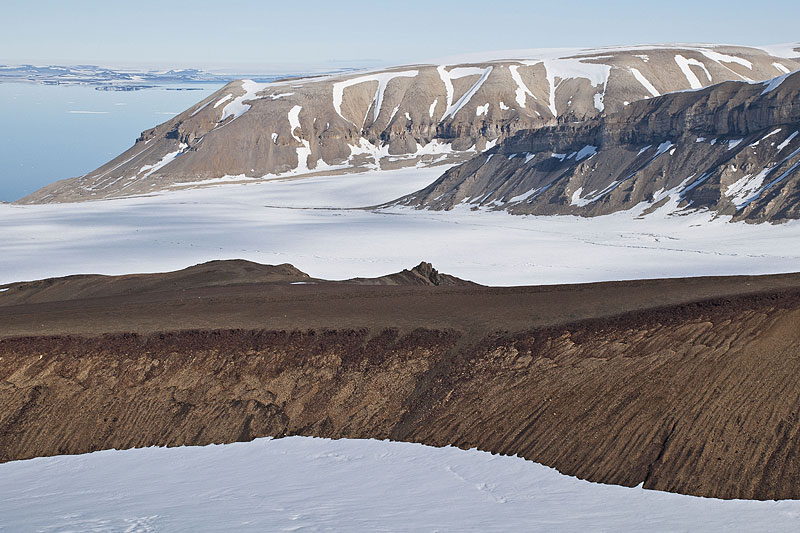 Lower-middle Polarisbreen, looking across informally named “Multikolorfjellet” in the foreground to the Carboniferous mountains of Carlhein-Gyllenskoldfjellet (left) and Cepheusfjellet (right) (MH). | 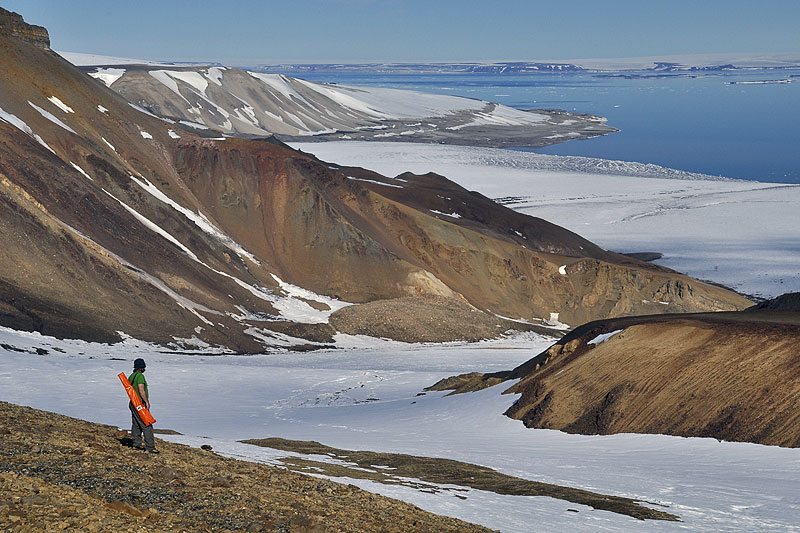 Another un-named tributary glacier of Polarisbreen flowing below “Tophatten”, looking towards the terminus and Hinlopenstretet beyond (MH). | 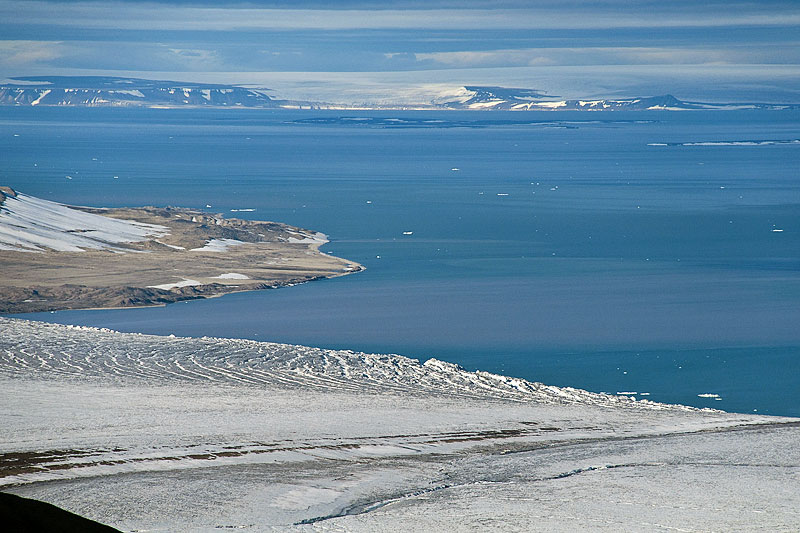 Telephoto of the terminal region of the combined Polarisbreen and Chydeniusbreen glaciers, showing extensive localised crevassing (MH). |
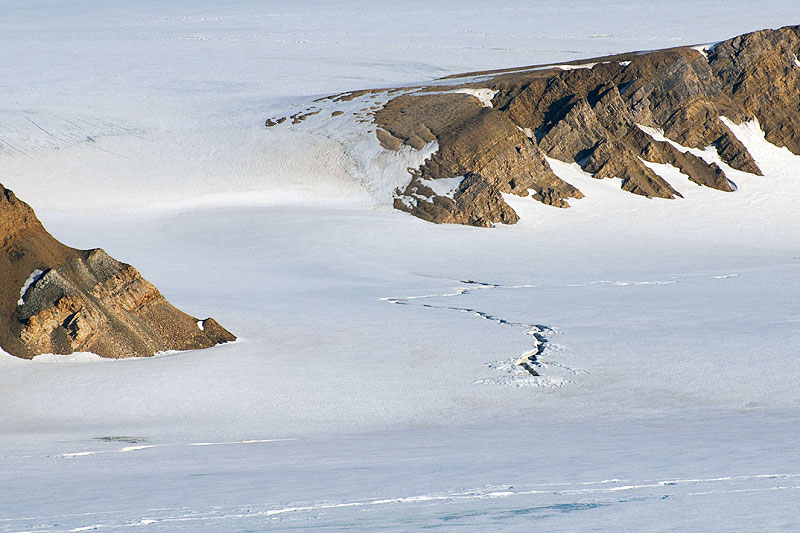 Large meltstreams are a feature of Polarisbreen, extending for many kilometres down the middle of the glacier. As here on the east side of the glacier, they originate from saturated snow as slush flows (MH). | 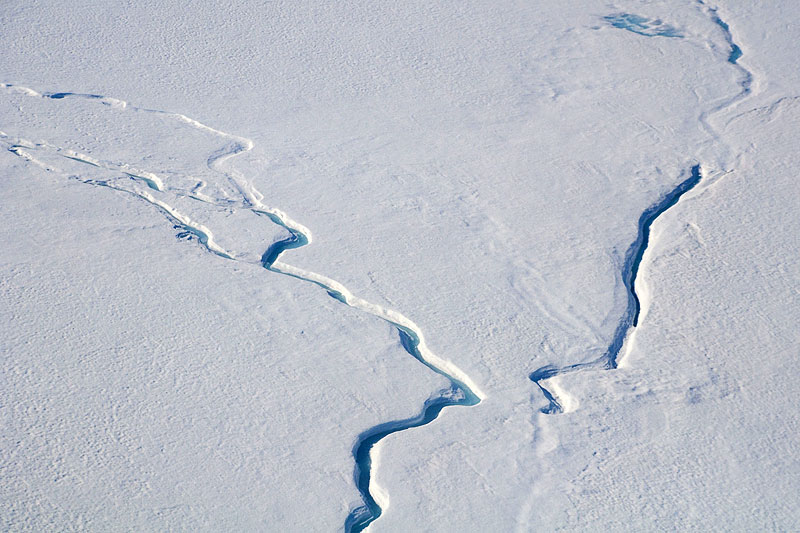 Converging meltstreams in the snowpack of upper Polarisbreen, viewed from the air (MH). | 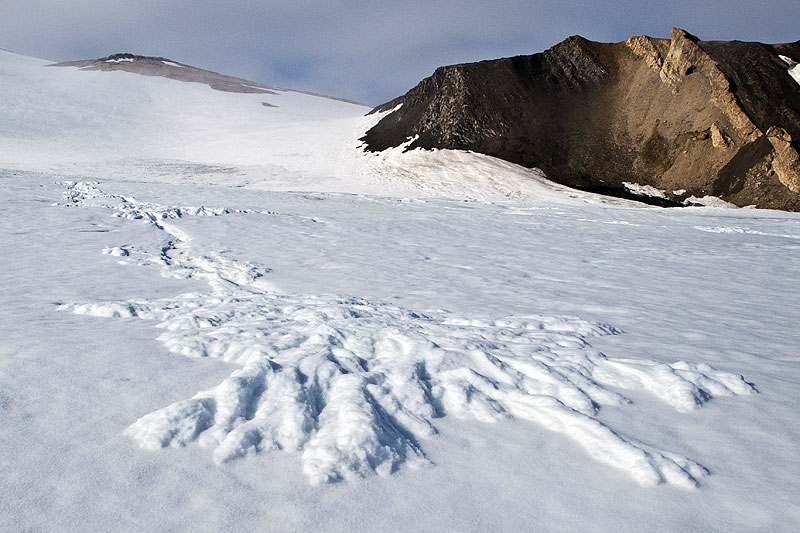 Slush flows are the biggest obstacle to travel across these snow-covered glaciers and wet feet are not unusual! (MH). | 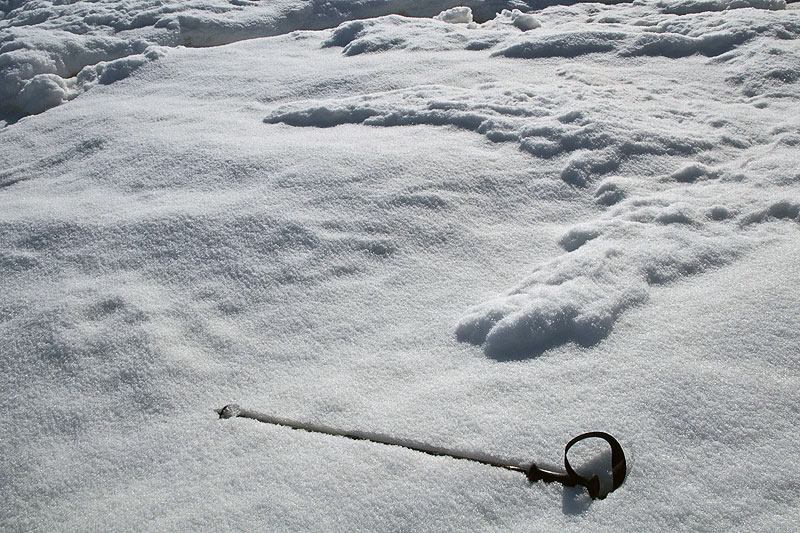 A small slush flow lobe, backlit by the sun, illustrating their complex form when flow ceases (MH). |
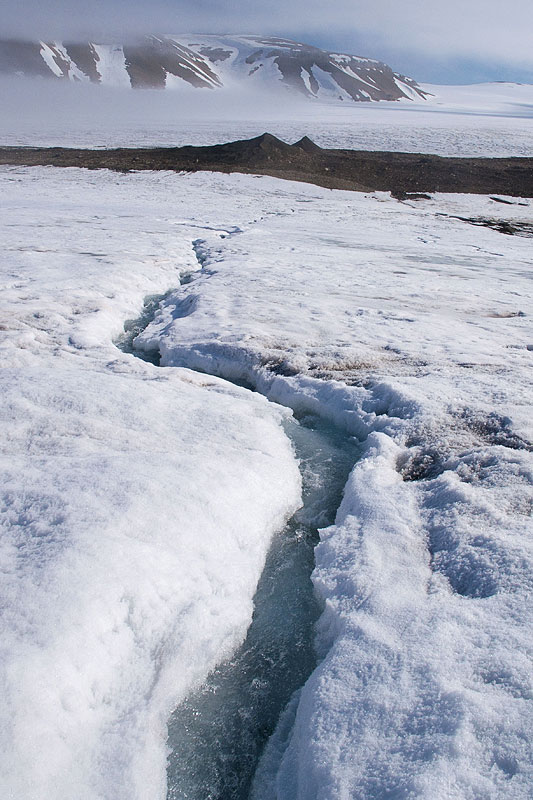 Small supraglacial streams on an un-named tributary glacier, between informally named “Multikolorfjellet” and “Gråfjellet” (MH). | 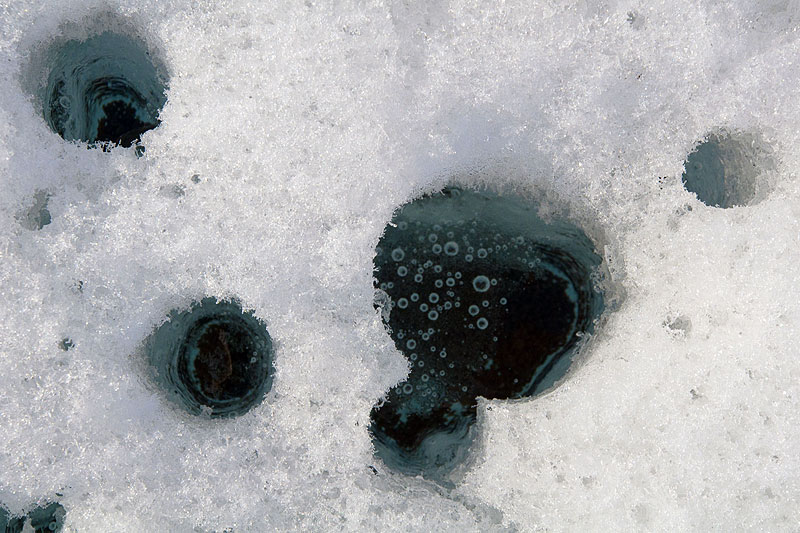 Cryoconite holes, a few centimetres in diameter, form where pockets of debris absorb more radiation than the surrounding ice (MH). | 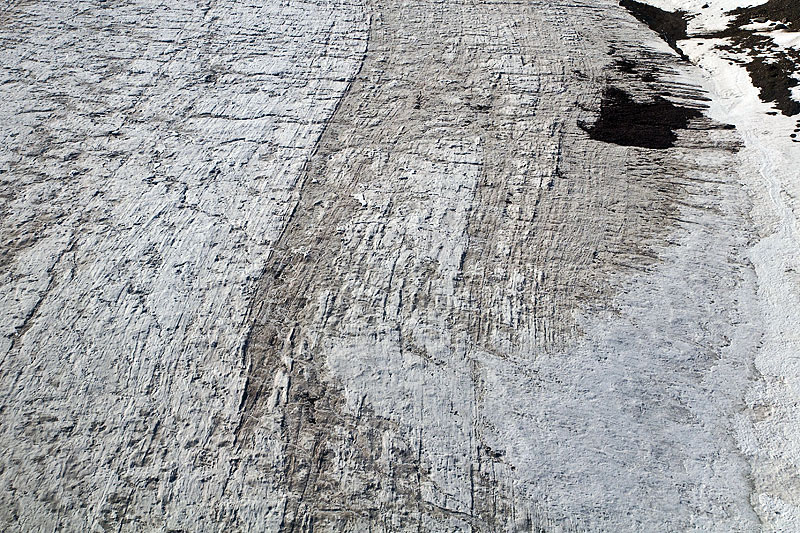 Aerial view of foliation and tight folding in the middle part of Polarisbreen (MH). | 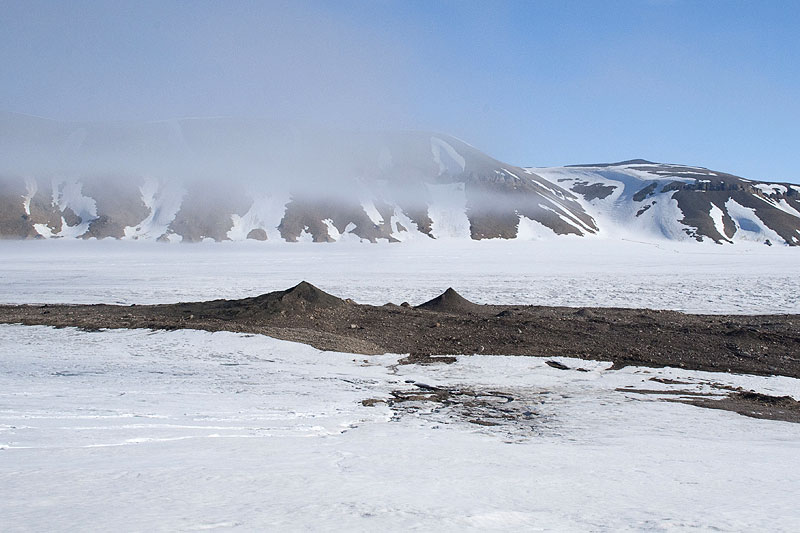 Medial moraine with two prominent dirt cones alongside the glacier margin below Dracoisen. The ridge of Tokammane is in the background (MH). |
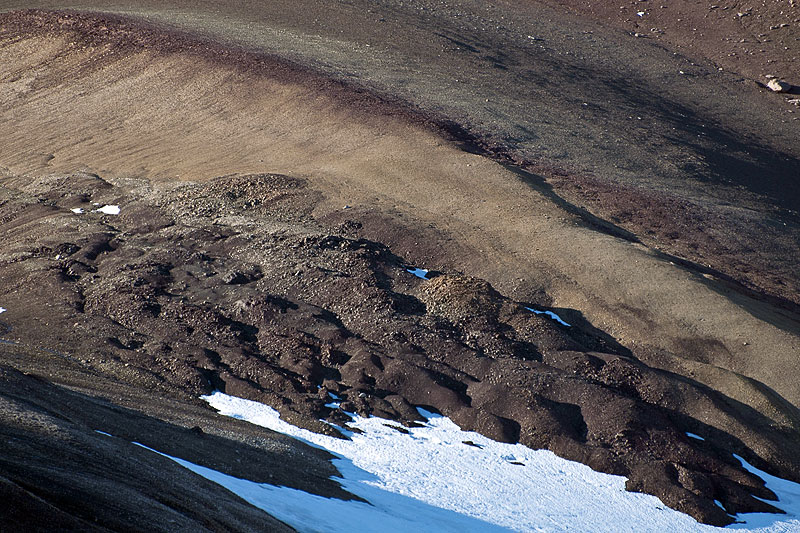 Hummocky moraine, relict from more expanded ice on the col between “Tophatten” and Dracoisen (MH). | 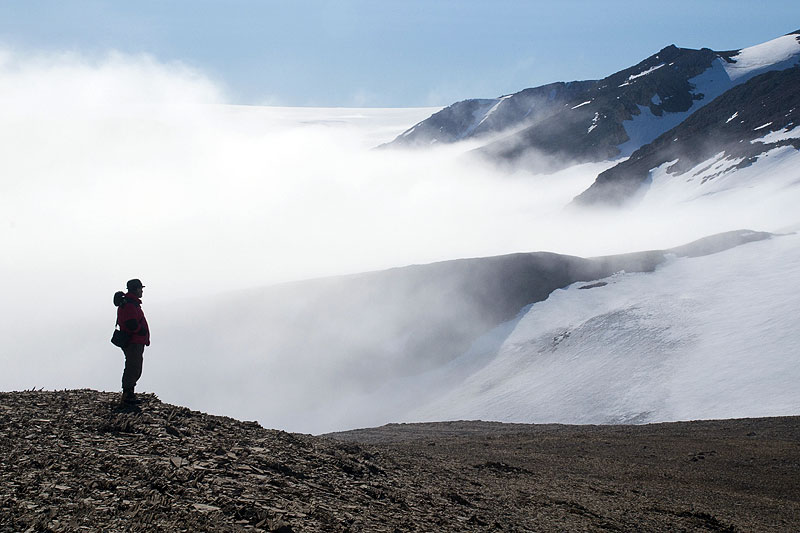 A feature of settled weather conditions in Svalbard is sea fog, which occasionally thickens and creeps inland up the glaciers and envelops the peaks (MH). | 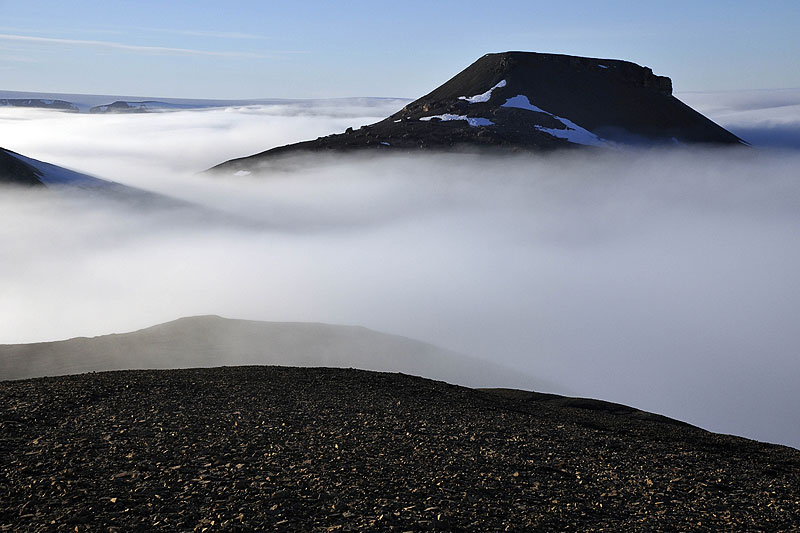 A blanket of low cloud surrounds summit of “Tophatten”, illustrating how it was given this informal name (MH). | 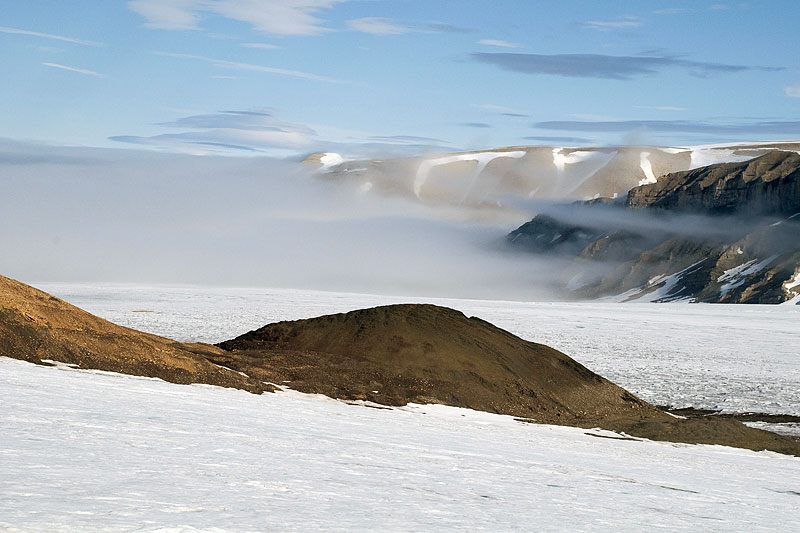 Fog over Hinlopenstretet beginning to creep up Polarisbreen (MH). |
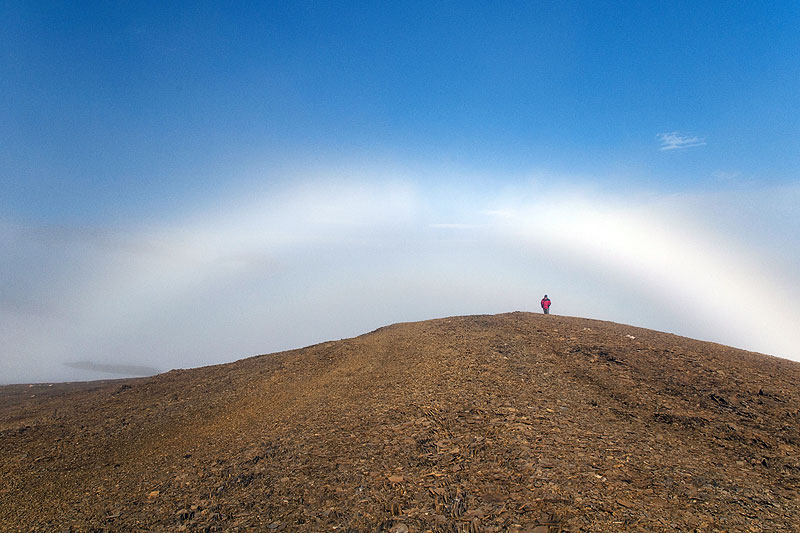 Fog bows are a common feature in sunny conditions when the fog is thin overhead (MH). | 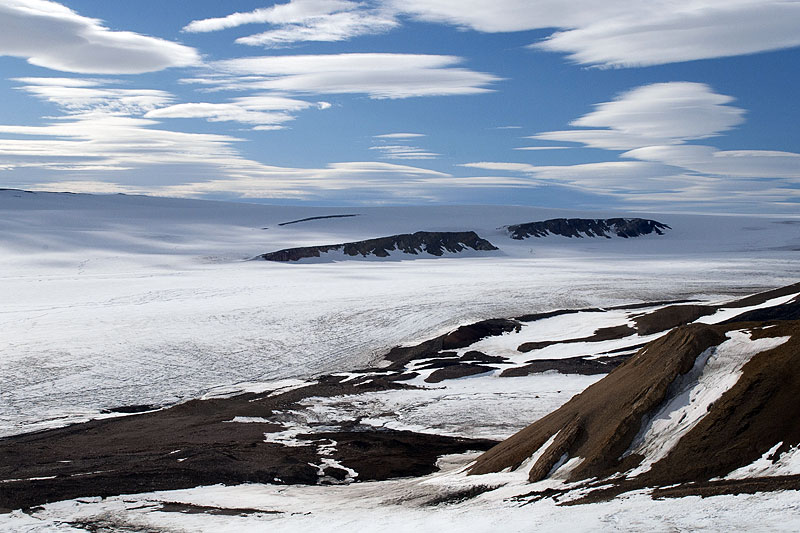 View of upper reaches of Polarisbreen with lenticular clouds indicating high winds aloft. These are typical of föhn conditions and are associated with strongly positive temperatures, inducing rapid melt (MH). | 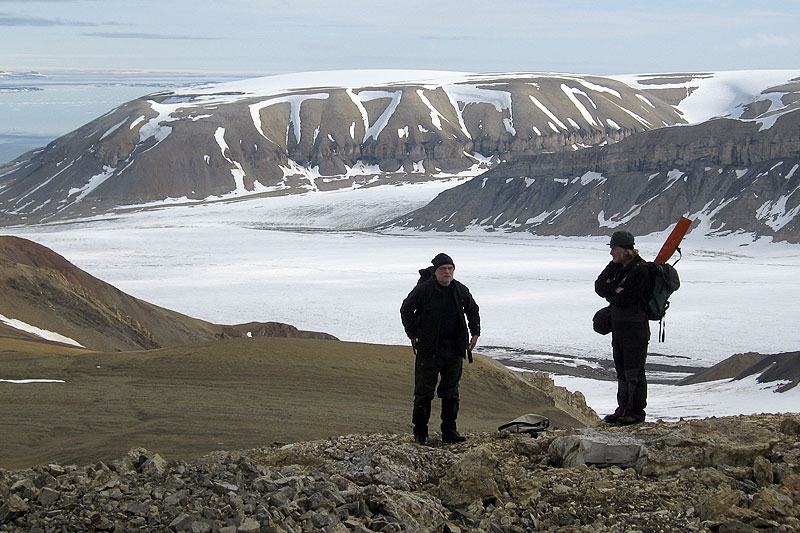 During geological reconnaissance we stop frequently to discuss the origins of the rocks. Here, Ian Fairchild and Doug Benn are debating the origin of dolostones in the context of the Snowball Earth theory with Polarisbreen in the background (MH). | 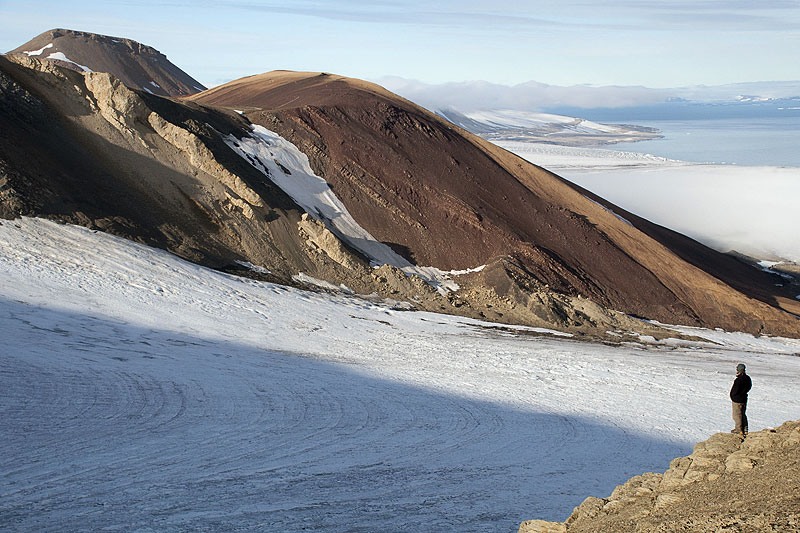 The glacial Wilsonbreen Formation is exposed between the two prominent pale dolostone bands (the right hand one being the “cap carbonate”) in “Multikolorfjellet” (MH). |
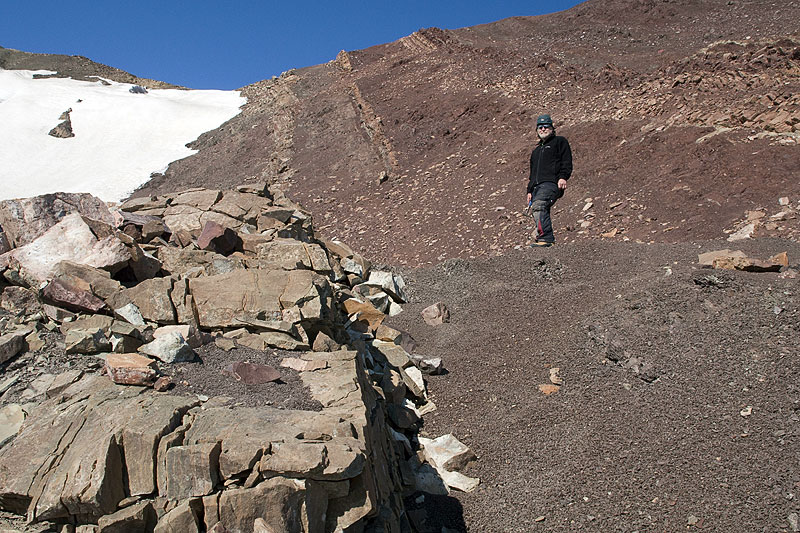 On the main Wilsonbreen section, showing maroon and grey diamictites to the right and top, and in the foreground a pale carbonate bed, illustrative of glaciomarine and cold-arid conditions respectively (MH). | 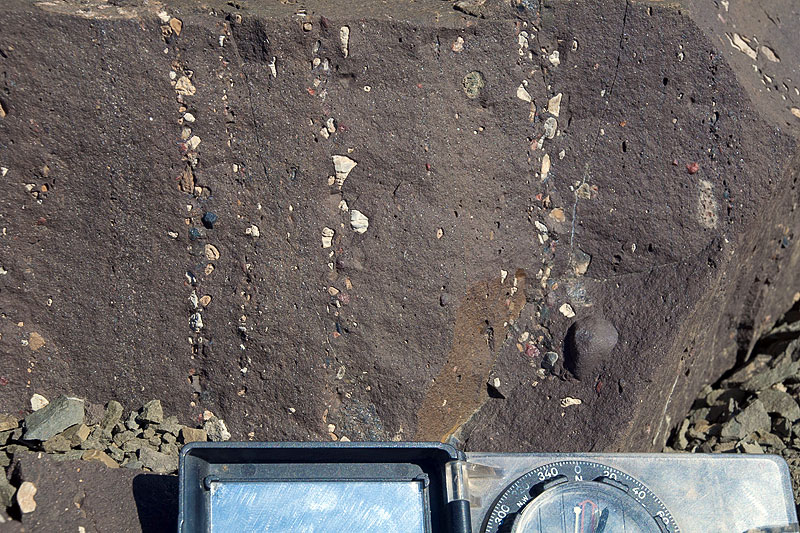 Stratification in the diamictite is illustrative of glacial deposition in a water body (MH). | 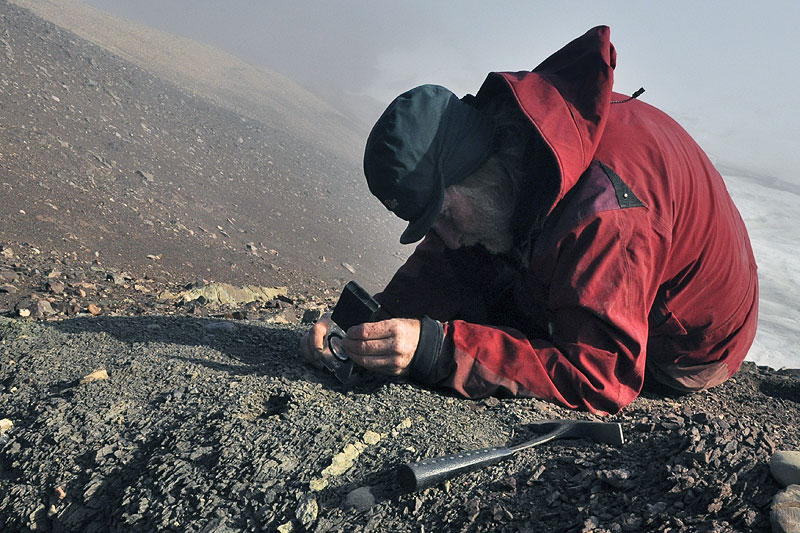 An important technique to establish the origin of diamictites is measuring the orientation of embedded stones (clast fabric analysis). Here the technique is being demonstrated by Doug Benn (MH). | 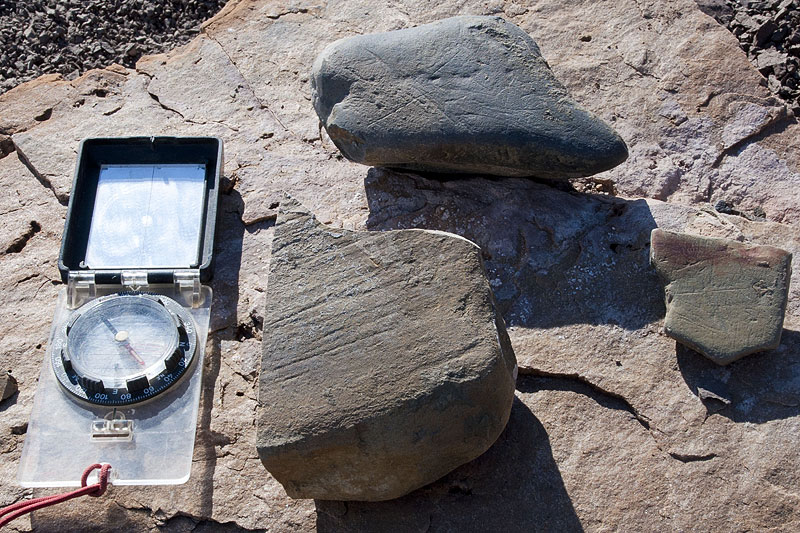 The rocks are so well preserved that they possess their original sedimentary features. Of these, the presence of striated stones in the Wilsonbreen Formation is the clearest indication that these sediments were transported by glaciers (MH). |
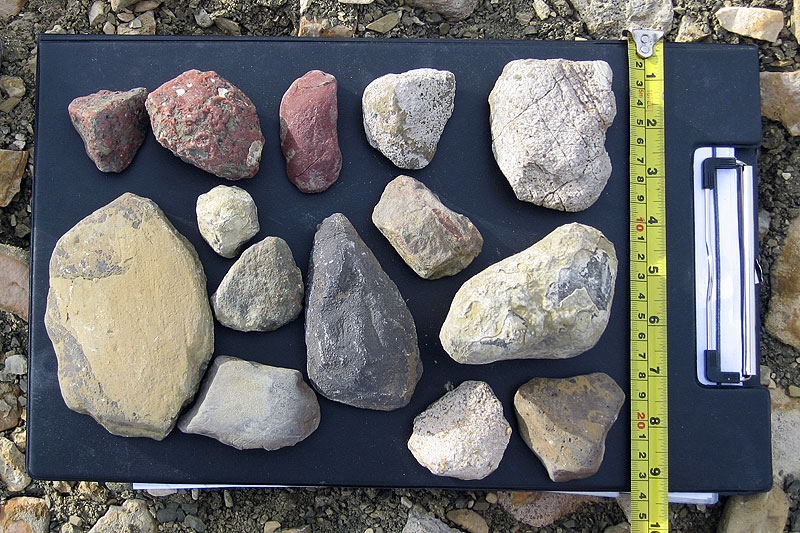 Another indication of glacial transport is the mixed rock types that are represented in the stones in the diamictite. Here is an extracted collection of stones originating in the carbonate strata immediately below the Wilsonbreen Formation and from more distal (but unknown) crystalline basement sources (MH). | 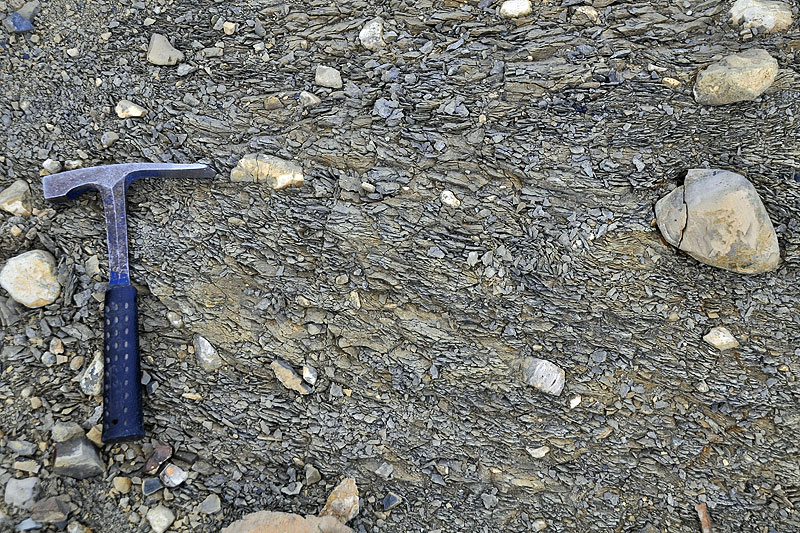 The lower glacial unit, the Petrovbreen Member of the Elbobreen Formation, is only partly exposed at Dracoisen, and is strongly cleaved, as here on Gråfjellet. This sediment is probably an iceberg rain-out deposit (MH). | 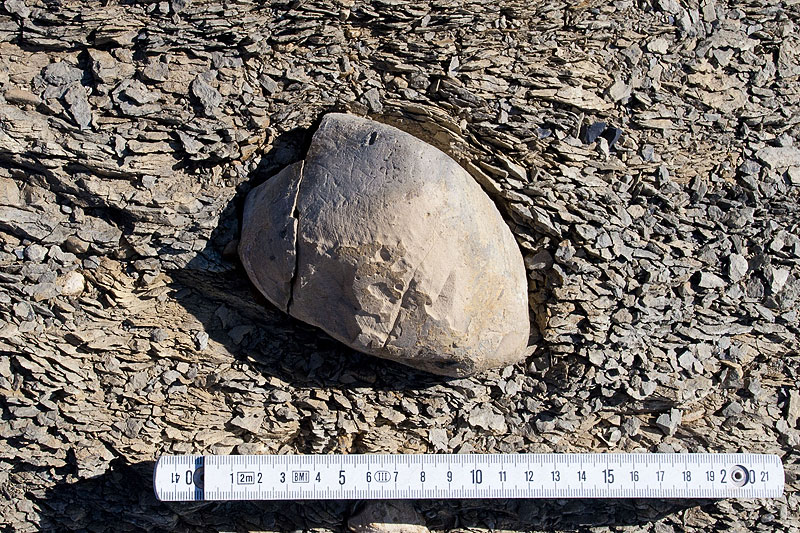 Cobble of dolostone in shaly diamictite of the Petrovbreen Member. This clast is striated, and thus indicative of glacial transport (MH). | 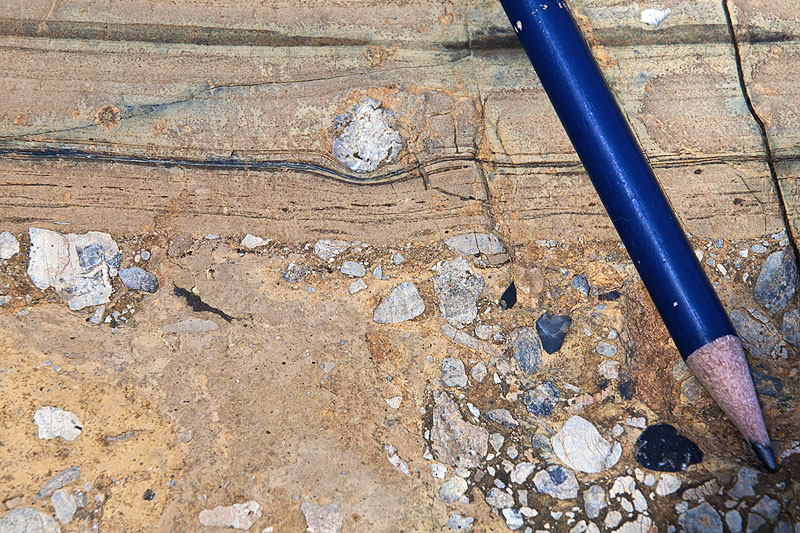 The top of the Petrovbreen member indicates that glacial activity ceased abruptly. The final event was a period of iceberg rafting, as illustrated by this dropstone structure. Note how when the stone hit the sediment, the laminae were deformed (MH). |
| The area was visited as part of the Birmingham University-led “Snowball Earth” project, as
described under Oslobreen, and this set of photographs includes images showing evidence of the 600 million year
old glaciation. Polarisbreen is the type locality of the rock sequence that contains evidence of two glacial
events: the younger Wilsonbreen Formation and the older Petrovbreen Member of the Elbobreen Formation, both
forming part of the Polarisbreen Group. |